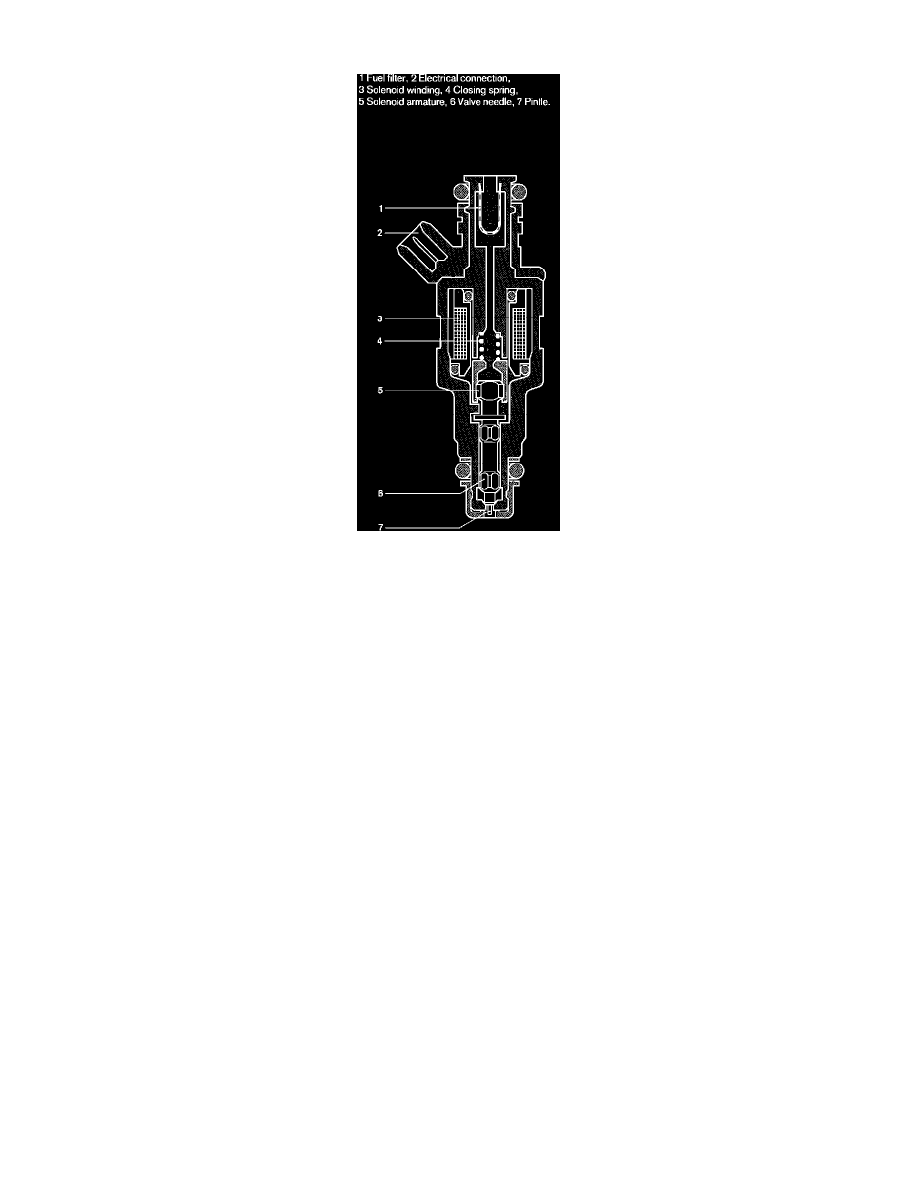911 Carrera Coupe F6-3164cc 3.2L (1984)

Fuel Injector: Description and Operation
Fuel Injector
The injection valve consists of a valve body and needle valve with fitted solenoid armature. The valve body contains the solenoid winding and the guide
for the needle valve. When there is no current in the solenoid winding the needle valve is pressed against its seat on the valve outlet by a helical spring.
When a magnetic field is generated in the solenoid winding the needle valve is lifted by approx. 0.1 mm and the fuel can flow out through a calibrated
annular orifice. The front end of the needle valve is provided with a specially ground pintle for atomizing the fuel. The open time of the valve lies in the
range of 1 to 1.5 ms. To achieve good fuel distribution with low condensation loss, wetting of the intake manifold walls must be avoided.
A particular spray angle in connection with a particular distance of the injection valve from the intake valve must be maintained. The fuel injection
valves are a push fit into the intake manifold and are held in place by the injection rail. Large rubber O-rings at the inlet and outlet of the fuel injector
provides insulation against heat which prevents the formation of fuel-vapor bubbles and guarantees good hot-starting characteristics. The rubber O-rings
also ensure that the injection valves are not subjected to excessive vibration.
The injection valves receive power from the DME main relay and are operated by ground pulses from the DME control unit. The duration of injection is
determined from various inputs to the DME control unit.
